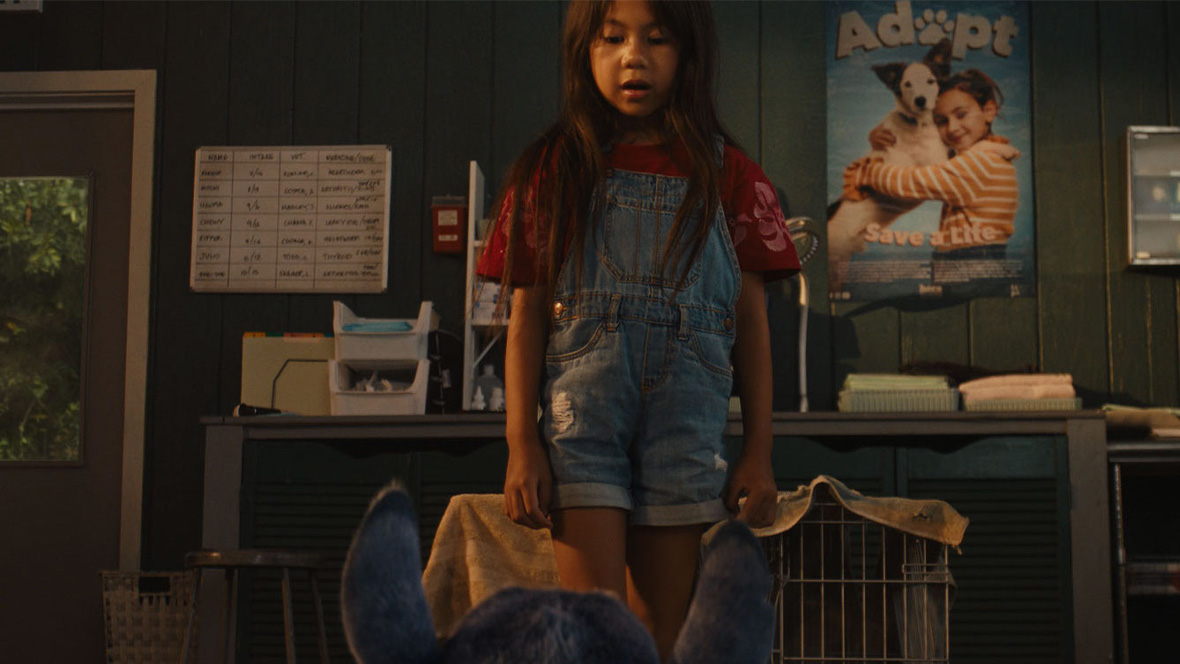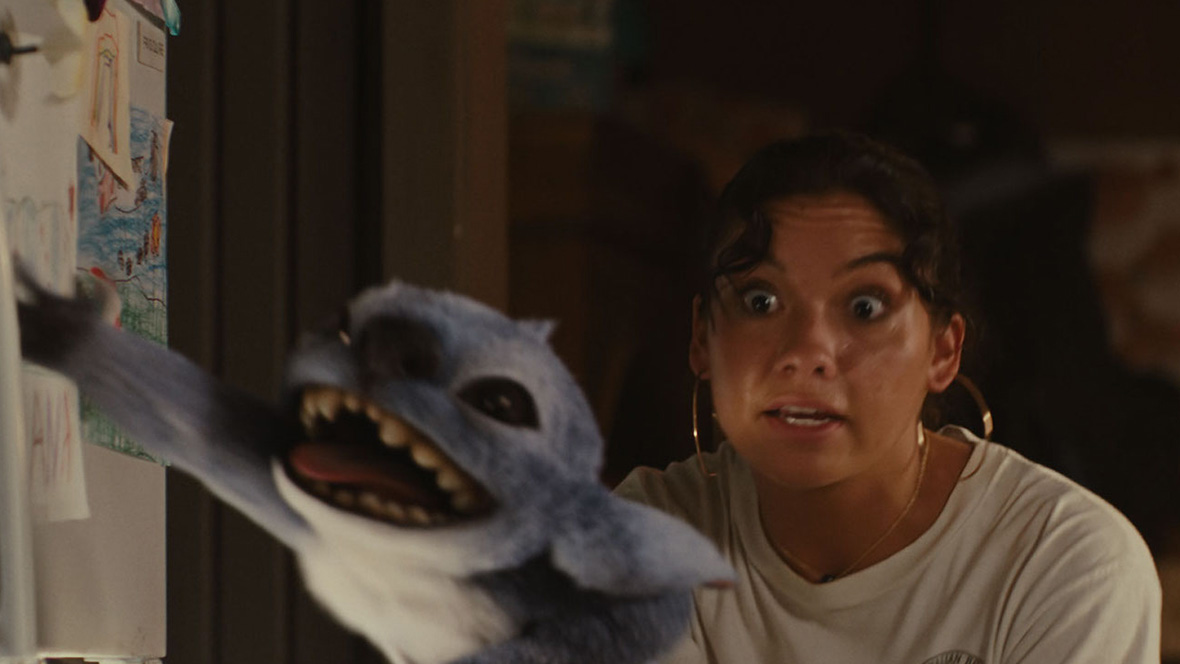By Christina Sturdivant Sani
[Excerpted from the Summer 2025 issue of Disney twenty-three. To enjoy this and upcoming issues of the publication, become a Gold Member today!]
When Disney released the animated film Lilo & Stitch in 2002, it created a “unicorn” in the Disney canon, according to Lilo & Stitch fan Jonathan Eirich. “First and foremost, you have Stitch—a whirlwind of terror wrapped in the cutest exterior imaginable,” Eirich, a producer on Disney’s Haunted Mansion (2023) and Aladdin (2019), tells Disney twenty-three. “It was a perfect storm to allow such a quirky, idiosyncratic story to get made—one that’s not about princesses or being perfect, but rather about real, deeply flawed characters discovering a found family.”
On May 23, Disney will release a reimagined live-action version of the film, which Eirich was excited to produce.
“In recent years, you could feel the fan fervor for [Stitch] building. I saw him everywhere out in the world, so you knew fan interest was there,” he says. “That comes with enormously high expectations to get it right… but I love that challenge.”
Set in Hawai‘i, the original film introduces us to Lilo, a little girl who’s being raised by her struggling older sister, Nani. Feeling lonely and dismissed by her peers, Lilo goes to an animal shelter where she adopts Stitch, whom she believes is a dog. In reality, Stitch is an alien creature programmed to cause chaos, and he’s on Earth trying to evade capture by an intergalactic police force.
While their journey is frenzied, Lilo and Stitch develop a close bond rooted in the Hawaiian concept of ‘ohana, which means family. All the while, Nani tries to quell the rambunctious duo and keep a stable job, after being threatened by a social worker who wants to transfer Lilo into foster care.
The right director for this remake needed “heart and humor in [their] filmmaking,” Eirich says, plus animation and visual effects experience to bring Stitch to life. He found that in Dean Fleischer Camp, whose film Marcel the Shell with Shoes On (2022) was nominated for an Academy Award® for Best Animated Feature Film in 2023.
“In that film, you see this quirky, clever, and beloved character of Marcel make us laugh throughout—but more than anything, make us cry,” says Eirich, who had known Fleischer Camp for years and reconnected with him after the Oscar® nomination. “His film was so deeply emotional, and that notion of dealing with loss and finding a family in Marcel was so directly applicable to what is at the core of Lilo & Stitch.”

“I basically make movies to try to make my dad cry in public, so Marcel… and Lilo & Stitch were perfect opportunities for that,” Fleischer Camp tells Disney twenty-three. In the animated Lilo & Stitch, he adds, “The sisters getting torn apart and the struggle that they’re going through is unusually terrestrial for a Disney movie.”
Remaking the sisters’ tale in live action called for even more depth of storytelling, he says. “Live action demands that you tell a real story and have real emotional stakes and that it’s grounded in people’s lived experience of how hard life can be.” Part of his job, he continues, was “trying to figure out the real-world version of what the original Lilo & Stitch did—and that was a fun challenge.”
As a director, that meant ignoring “the swirling chaos going on all around me and trying to put myself in the shoes of an audience member who’s going to see this movie two years later… and ask really basic questions like, ‘Does this joke make me laugh?’; ‘Do I empathize with this person’s struggle?’; ‘Is this storytelling clear?’—those basic things that seem really far off when you’re in a jungle in Hawai‘i… That’s my approach.”
One thing the filmmakers knew for sure: The movie would portray authentic Hawaiian culture. In addition to shooting the entire film in Hawai‘i, they hired screenwriter Chris Kekaniokalani Bright, “who is an extraordinary writer and also born and raised in Hawai‘i,” Eirich says, adding that Bright’s mother was the director of the choir that performed the music for the original film and for the reimagining.
Those touches of authenticity “are felt throughout,” Eirich says, thanks to Bright and “an army of consultants” including Lāiana Kanoa-Wong, Mandi Kaleilani Medeiros Scott, and Mark Keali‘i Ho‘omalu—who ensured that the music, dialogue, locations, and spirit of the film all felt true to the Hawaiian community.
The team was also strict about casting Hawaiian actresses for the lead roles, says Eirich, who calls the search for their Lilo “broad and relentless.” What was particularly challenging was auditioning girls between the ages of 8 to 10. “There is such an innocence to Lilo—she doesn’t understand why she does the things she does or why people around her don’t think she ‘fits in.’ The older the actor, the less of that innocence you saw, so we really started to zero in on 6-year-olds as the sweet-spot age,” he says. Not only did the actress have to resemble and embody Lilo, but she also had to memorize lines and have the endurance for a long feature film shoot, he adds.
Late in the process, they found an audition tape for Maia Kealoha, who says she has a lot in common with Lilo. “We love our culture, we love helping others, and we’re both—I guess you could say—spunky,” she tells Disney twenty-three.
Kealoha was an “absolute revelation,” Eirich says. Fleischer Camp agrees, calling her “an enthusiastic collaborator,” despite this being her very first acting role. “Maia was like… ‘I don’t know what moviemaking is, I don’t know what acting is, but I’m here to perform. What do I do?’” By the end of shooting, “she was such a pro,” Fleischer Camp says. “No ego about it and such a natural performer.”
Similarly, the casting team was impressed by Sydney Elizebeth Agudong, who plays Nani and “is a discovery in her own right,” Eirich says. For Agudong—who’s seen the original Lilo & Stitch “close to one hundred times”—playing Nani was “a creative dream,” she tells Disney twenty-three. “The wonderful thing about art and film is that nothing is set in stone—you prep, study, practice, experiment, and still the moment they call ‘action,’ the slate is clean, and you rediscover your character all over again in real time. And that’s when magic happens.”



